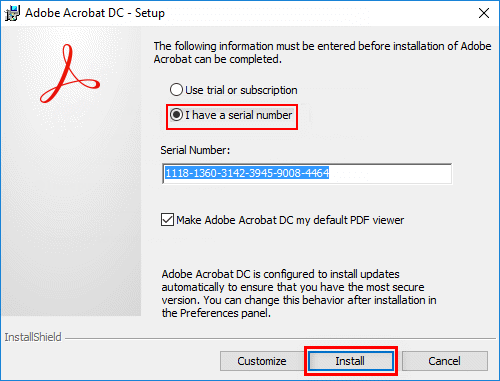

- 2015 RELEASE ADOBE ACROBAT DC PRO PDF
- 2015 RELEASE ADOBE ACROBAT DC PRO PORTABLE
- 2015 RELEASE ADOBE ACROBAT DC PRO PRO
- 2015 RELEASE ADOBE ACROBAT DC PRO SOFTWARE
- 2015 RELEASE ADOBE ACROBAT DC PRO WINDOWS 7
The last pre-DC version, Acrobat XI, was updated to 11.0.23 version (and this was the final release ) on November 14, 2017, support for which had ended a month earlier on October 15, 2017. Updates for the Classic track are released quarterly, and do not include new features, whereas updates for the Continuous track are issued more frequently, and implemented silently and automatically. From DC 2015 the Acrobat family is available in two tracks, the original track, now named Classic, and the Continuous track. Version numbers are now identified by the last two digits of the year of major release, and the month and year is specified the previous version was 12, but examples of the DC (Document Cloud) Acrobat product family versions are DC June 2016, version 15.016.20045, released 2 June 2016 and DC Classic January 2016, version 15.006.30119, released 12 January 2016.
2015 RELEASE ADOBE ACROBAT DC PRO WINDOWS 7
The GUI had major changes with the introduction of Acrobat DC in 2015, which supports Windows 7 and later, and OS X 10.9 and later. Following the introduction of Document Cloud, was discontinued as their features were integrated into the desktop programs and mobile apps.

In addition, "Reader" was renamed back to "Acrobat Reader". Programs under this branding received a "DC" suffix.
2015 RELEASE ADOBE ACROBAT DC PRO SOFTWARE
In April 2015, Adobe introduced the " Document Cloud" branding (alongside its Creative Cloud) to signify its adoption of the cloud storage and the software as a service model. Unlike most other Adobe products, such as members of Adobe Creative Suite family, the Acrobat products do not have icons that display two letters on a colored rectangle. In 1999, the service came to being and introduced several web services whose names started with "Acrobat", but eventually, "" was downgraded from the name of the family of services, to that of one of those services. Between versions 3 and 5, Acrobat did not have several editions. Over time, "Acrobat Reader" became "Reader".

"Acrobat Exchange" soon became "Acrobat". Initially, the offered products were called Acrobat Reader, Acrobat Exchange and Acrobat Distiller. Old logos of Acrobat programs and servicesĪdobe has renamed the Acrobat products several times, in addition to merging, splitting and discontinuing them.
2015 RELEASE ADOBE ACROBAT DC PRO PDF
Acrobat can crop PDF pages, change their order, manipulate hyperlinks, digitally sign a PDF file, add comments, redact certain parts of the PDF file, and ensure its adherence to such standards as PDF/A. In other words, Adobe Acrobat is able to modify the contents of paragraphs and images, but doing so does not repaginate the whole document to accommodate for a longer or shorter document. It's also possible to import a scanner's output, a website, or the contents of the Windows clipboard.īecause of the nature of the PDF, however, once a PDF document is created, its natural organization and flow cannot be meaningfully modified. It can import popular document and image formats and save them as PDF. The main function of Adobe Acrobat is creating, viewing, and editing PDF documents.
2015 RELEASE ADOBE ACROBAT DC PRO PORTABLE
to view, create, manipulate, print and manage Portable Document Format (PDF) files.
2015 RELEASE ADOBE ACROBAT DC PRO PRO
Adobe Acrobat Pro DC running on Windows 10.


 0 kommentar(er)
0 kommentar(er)
